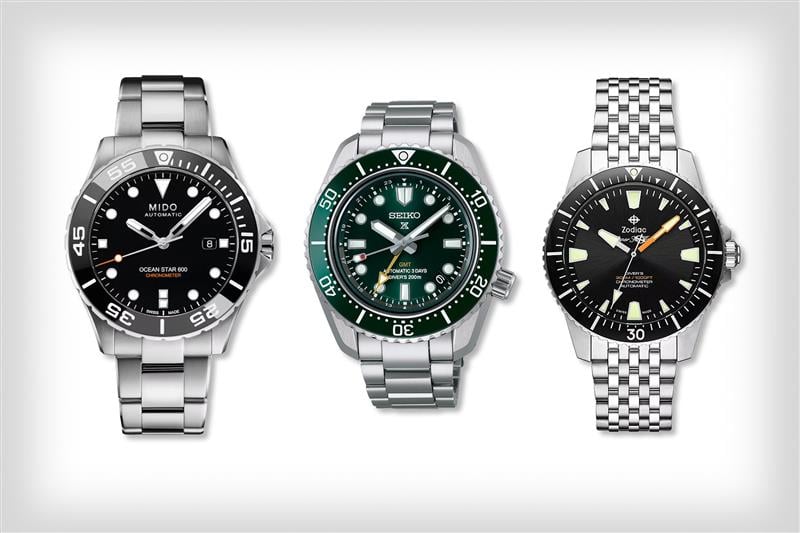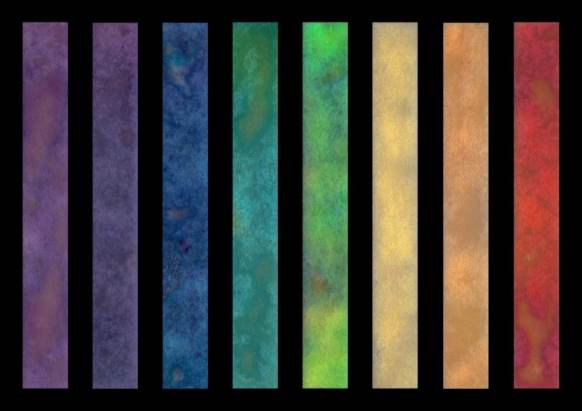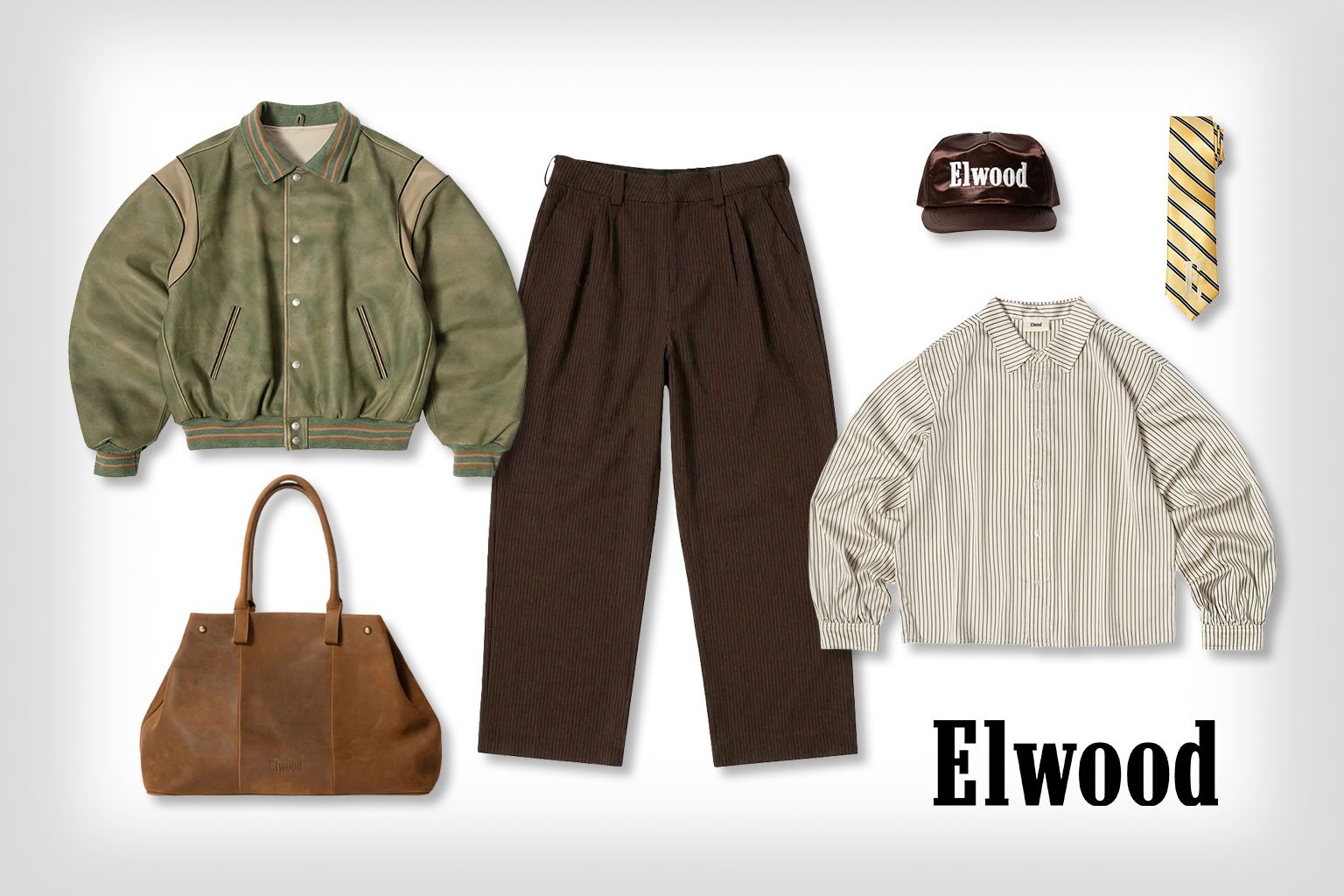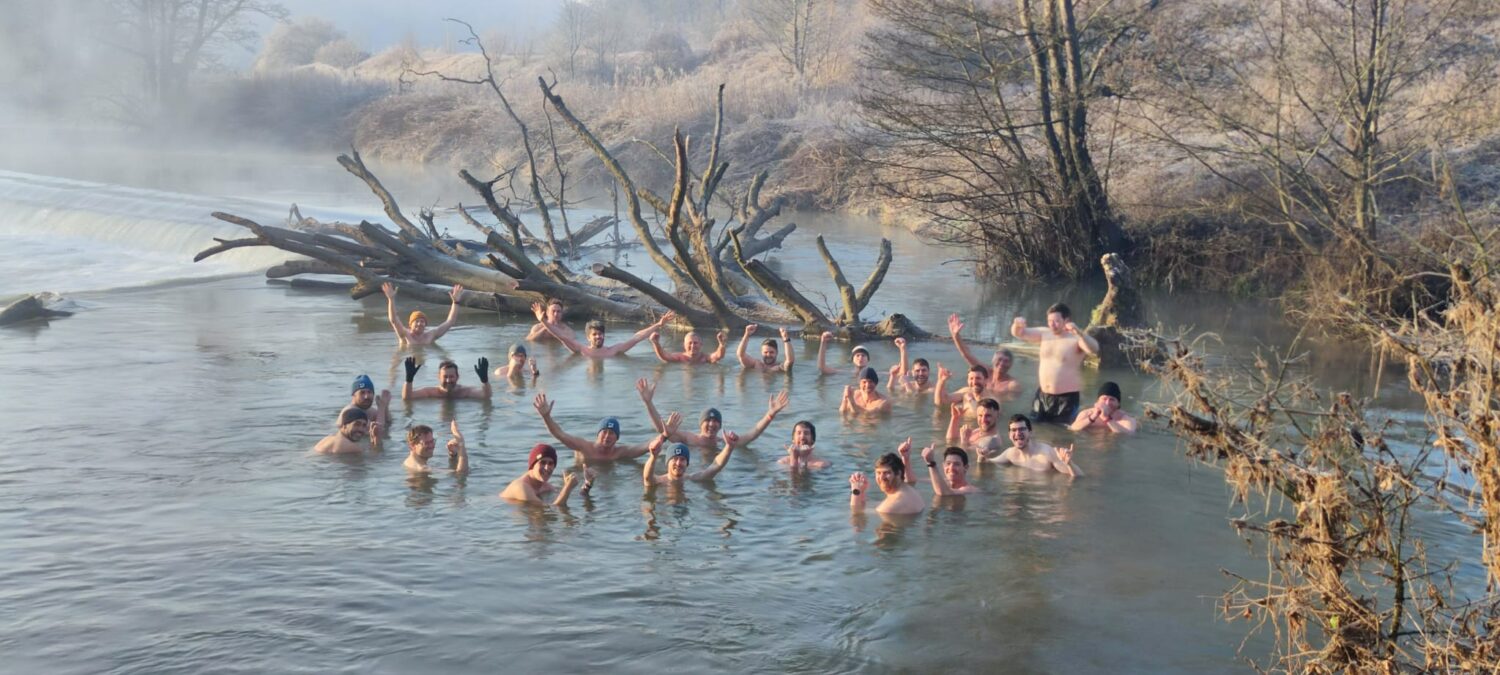EVERYDAY CARRY: Seamaster | FashionBeans
Dec 30, 2025Clothing & Style of the Roaring Decade
- Oct 10, 2023
- 0 Comments
760
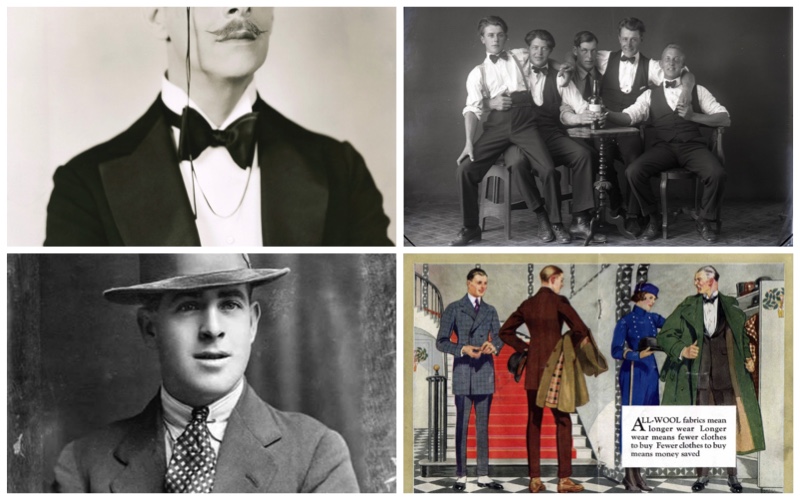
The Roaring Twenties weren’t just an era of flappers and jazz. 1920s men’s fashion marked a pivotal chapter in style. Post-World War I, the air seemed ripe for reinvention. Gone were the days of somber, buttoned-up ensembles. Men shook off the dust of tradition, opting instead for clothes that gleamed with bright hues and dashing patterns.
The Social Fabric of 1920s Men’s Fashion
The seismic shift in 1920s men’s fashion wasn’t merely aesthetic. It signaled a social evolution. A booming economy, fueled by industrialization, brought tailoring into the purview of the everyday man. No longer the exclusive domain of the well-heeled, stylish suits graced the shoulders of citizens from all walks of life. The democratization of fashion had commenced.
In an era without social media, department store catalogs played the role of influencers. Distributed far and wide, these catalogs were the rural man’s ticket to cosmopolitan chic. The seeds of individualism in fashion were thus sown in the very fabric of America’s heartland.
The Democratization of Style
In the tapestry of 1920s fashion, department stores like Sears, Roebuck, and Montgomery Ward were significant threads. They weren’t merely places to shop. They were the megaphones amplifying the new era’s style lexicon.
Meanwhile, the allure of the American Dream drew individuals to burgeoning cities. This migration wasn’t just about skyscrapers and job opportunities. It was the fertile soil in which the fashion industry thrived.
Around this magnetic pull of urban centers, brands like Brooks Brothers and Jos. A. Bank didn’t just ride the wave—they became its navigators. Their name became synonymous with tradition and innovation, a guide and cornerstone in a culture increasingly devoted to aesthetics.
But it could have been smoother sailing for brand-name manufacturers. Retailers began flirting with unbranded merchandise, seduced by the higher profit margins they offered. Brands needed a rebuttal. Their chosen platforms were newspapers, magazines, and the developing medium of radio.
Their question to consumers was simple yet thought-provoking: “Do you prioritize price or value?” This sparked a conversation that transcended clothing and delved into the ethos of consumption, reminding people that quality, like true style, is timeless.
Men’s Formalwear: The Suit
In the 1920s, men aspired to be well-dressed and radiate a sense of youthful finesse. The idea was straightforward: look like you’ve just stepped out of an F. Scott Fitzgerald novel—slim, sophisticated, and ahead of the curve. The natural shoulder suit, snugly tailored, was the go-to garb, a visual shorthand for modernity.
But it didn’t stop there. Options abounded for the style-conscious man. Pinstriped suits were masterfully coordinated with white shirts and stripe neckties, making each outfit a meticulous work of art.
The 1920s were a hotbed of sartorial experimentation, offering everything from cropped suits to wide-legged trousers. This era didn’t just welcome personal expression through clothing—it celebrated it. And when it came to accessories? Fedoras and spats were more than mere add-ons—they were the final brushstrokes on a sartorial masterpiece.
The Three-Piece Suit
During the twenties, a fashionable man’s wardrobe was only complete with the esteemed three-piece suit. Exposing a dress shirt beneath the suit jacket? Unthinkable. The solution was the high V-neck waistcoat or its more casual cousin, the sweater vest. These weren’t just sartorial placeholders but statements in their own right.
Specifically, the sweater vest, bursting with color options, transcended the boardroom and became a staple on the golf course. This particular item serves as a link between decades, remaining a sought-after piece for modern-day golfers.
Tailoring as High Art: The 1920s Jacket
Regarding jackets in the Roaring Twenties, no detail was too small to escape scrutiny. Wool tweed and heavy wool were favored, forming a luxurious foundation for impeccable tailoring. Natural shoulders met wide lapels in a harmonious design, while flap pockets offered functionality and flair. Cinching at the waist elevated these jackets from mere garments to tailored masterpieces.
Button placement wasn’t arbitrary but precise—usually, three or four, whether on a single-breasted or double-breasted jacket. This meticulous approach crystallized in the top button, leading to the notch lapels, a defining feature of the era’s style.
While the mature crowd gravitated toward classic navy blue, brown, and medium gray, the younger set broke the mold. They flirted with the color spectrum, introducing a refreshing palette of grey-blue, tan, and even pale gray. Thus, the 1920s offered a spectrum of styles that catered to both the traditionalist and the avant-garde, proving that fashion, at its best, is a dialogue that welcomes all voices.
Popular Colors for Clothes
Men articulated their style through a vivid tapestry of colors and shapes. Classics like navy, brown, and gray served as the backdrop, punctuated by softer hues such as ivory. Regarding accents, pastel blue, mustard yellow, and olive green splashes enlivened the palette.
Seasonal shifts influenced these choices, with lighter tones reigning in summer and darker shades holding court in winter.
The Black Suit
Black was reserved for specific, somber moments, chiefly funerals. Donning an all-black ensemble was a fashion choice and a deeply ingrained cultural signal of mourning and respect. In contrast, wearing black at any other event was considered a faux pas, emphasizing the color’s solemn connotation.
Interestingly, even as grayscale tones dominated the standard suit palette of the time, true black was conspicuously absent. Instead, men opted for nuanced shades like navy blue and charcoal gray, subtly distancing everyday attire from the gravitas associated with black.
Shirt Trends
In a break from convention, the dress shirt opted for vivacity over sobriety. Stripes held sway as men combined vertical lines with solid hues to inject their flair into daily attire. The color palette was anything but monochrome, with daring splashes of pink and yellow.
Collars offered their choices, ranging from the round club variety to the free or pointed versions. The cultural impact of The Great Gatsby even lent prestige to the mandarin shirt, elevating it to a popular choice of the era.
Pants & Trousers
Traditional trousers were more than just a bottom half—they were a sartorial statement. Defined by cuffs and twin pleats at the waist, a crisply ironed front leg crease was the finishing touch. These trousers were cut to reveal the ankle, showcasing high-worn socks in solid or argyle patterns anchored in place by sock garters.
High-waisted by design, these trousers could be cinched with either a belt or suspenders. As the decade unfolded, pant legs evolved from narrow to a more generous width, reflecting a broader shift in men’s fashion tastes and comfort preferences.
Suit Accessories: Ties, Pocket Squares + More
Bow-ties and neckties were more than mere punctuation—they were statements. With a repertoire that spanned solid colors to stripes and even polka dots, these narrow, often shortened ties provided a burst of color in sync with the era’s lively shirts.
Beyond traditional ties, silk scarves became the avant-garde choice for neck adornment, offering a touch of bohemian flair. In this spirited age, gloves and pocket squares emerged as the small but significant details that articulated individual style.
Far from today’s muted palette, men of the 1920s were drawn to bright reds, counterbalanced by the soothing gravitas of dark greens and light browns. Elevating these outfits were the subtle accents of collar pins and cufflinks, making each outfit a curated expression of persona.
Casual Attire
Sweaters
Sweaters emerged as a stylish and practical favorite amid the colorful tapestry of 1920s men’s fashion. The silhouettes gravitated toward V-neck pullovers and cardigans, some even venturing into buttonless, free-form designs with generous shawl collars. Far from muted, these garments often flaunted audacious patterns, awash in vibrant reds, blues, and yellows.
Crafted from wool or cotton, these sweaters are combined with dress shirts, trousers, and suspenders to complete the look. The result? An ensemble effortlessly transcended occasions, anchored by loafers that added the final fashionable flourish.
Shirts
As the 1920s unfolded, men’s fashion embraced a sense of ease, trading rigidity for fabrics that welcomed touch. Shirts became emblems of this shift towards comfort and functionality. Crafted primarily from cotton or linen, their color choices—white, blue, brown, or grey—were intentionally uncomplicated.
Collars of the era diversified, offering both straight-pointed and soft lapel styles that could open at the neck for a laid-back appeal. To achieve a polished look, collar pins became the silent workhorses, holding things neatly in place. Sleeve lengths were adaptable, short for casual days, or extended to suit more ceremonious settings.
The shirts from this transformative decade managed to straddle the line between classic and contemporary, adapting themselves seamlessly to formal gatherings or the routines of daily life.
The Country Jacket
The country jacket was a versatile cornerstone in a well-curated wardrobe. Its hues drew inspiration from the landscape, showcasing earthy browns, deep greens, and nautical navy blues. Tailored with thoughtful features like leather buttons and slanted pockets, the jackets often boasted tweed fabric—a nod to their outdoor origins.
These jackets weren’t confined to rural escapades like hunting or fishing. Their intrinsic elegance allowed them to segue effortlessly into more sophisticated settings, especially when teamed with crisp trousers and a neatly collared shirt.
Pants
Men often reached for knickerbockers for more relaxed settings, alternatively known as plus fours or simply knickers. These distinct trousers cut off just below the knee, their silhouette accentuated by a generous cuff. Whether cinched with suspenders for a traditional flair or an elastic waistband for comfort, they made a casual statement.
While the classic brown and navy blue colors were popular for knickerbockers, adventurous patterns like plaid and wide stripes also appeared. High socks extending beyond the calf added extra panache to these outfits.
As the decade neared its end, younger men took a sartorial detour, embracing the expansive proportions of “oxford bags.” These trousers, with their slim waist and roomy legs, were typically coupled with athletic footwear like sneakers or canvas shoes, marking a youthful pivot in casual attire.
White Pants
White pants transcended their exclusive pre-war origins to become a staple across social strata. Initially a symbol of summer elegance among the well-heeled, by the mid-1920s, these light-colored trousers had democratized into a wardrobe essential for men of every class and occupation.
Visible in casual and formal settings, white pants claimed their spot in the sartorial lexicon of the era. This penchant for pristine trousers endured into the 1930s and 40s but eventually gave way as fashion currents shifted anew.
Sleeve Cuffs & Armbands
Sleeve cuffs and armbands, also known as sleeve garters, were the unsung heroes in 1920s men’s fashion. Armbands, often crafted from luxurious silk or sumptuous velvet, circled the wrist like a halo, infusing outfits with an extra layer of color and texture.
On the other hand, sleeve cuffs, generally made from wool or cotton, were designed for a roll-up feature, offering an air of casual sophistication. These pieces brought a nuanced blend of formality and relaxed elegance to the men’s wardrobe of the time.
Hats
1920s men’s hats were more than mere headgear—they were a personal style declaration. Essential for formal soirees and casual outings, the fedora reigned supreme with its wide brim and supple crown, often crafted from felt or straw. Other coveted styles, like bowler hats and flat caps, added diversity to the millinery landscape.
In contrast, top hats, homburgs, straw boater hats, and Panamas served as sartorial signatures. Embellishments like feathers or ribbons lent a unique flair, allowing men to take their fashion bravado up a notch. As the crown to any outfit, hats lent men a final touch of sophistication that encapsulated their regard for fine dressing.
Not to be overlooked, 1920s hair also played a role in the style narrative. Whether slicked back or parted, a man’s hairstyle often worked in harmony with his chosen hat, completing a polished and expressive look.
Clothing Trends
In the tumultuous landscape of the 1920s, men’s fashion stood as a study in contrasts. While women’s attire dared the conventional, bursting into sequins and hemlines, men’s fashion retained a more cautious disposition.
Nevertheless, the Roaring Twenties didn’t leave men in sartorial stagnation. Distinct trends surfaced, veering from the traditional roadmap to etch a unique mark on the decade.
Detachable Shirt Collars
The allure of versatility found its way into men’s shirts through the detachable collar. This clever innovation enabled men to effortlessly swap out collars, tailoring their look to the mood or event.
A pristine white collar could be deployed for gala affairs, while a more playful, diagonally striped fabric sufficed for lighter moments. These collars demanded starching pre-wear, a nod to the era’s penchant for crisp lines and impeccable grooming, ensuring that men appeared polished regardless of the time or setting.
Casual Dress
Sportswear made a grand entrance into men’s casual fashion, disrupting the sartorial norms of the time. Golf courses and boat decks became the backdrops for men dressed in cozy sweaters, pleated trousers, or more daring knickers.
Double-breasted suits, punctuated by expansive lapels, marked the era’s more formal aesthetics. Accents like fedoras and shoe spats elevated these ensembles, infusing them with flair.
Art Deco en Vogue
As the 1920s evolved, men’s fashion became an eloquent expression of the Art Deco movement sweeping the globe. Architectural in its flair, the era traded previous complexities for lean, geometric forms. Suits transformed into sharp statements, amplifying broad shoulders and cinching narrow waists, particularly in double-breasted designs.
Patterns also took bold turns, embracing pinstripes, checks, and geometric imprints. Fabrics like silk and velvet graced ensembles, taking sophistication to greater heights. As for accessories, they evolved into veritable extensions of personal style.
Pocket squares and hats crafted from straw or felt were elegant, complementing the decade’s penchant for two-tone shoes. In this Art Deco canvas, each component worked in harmony, rendering the decade a monumental chapter in the narrative of men’s fashion.
Collarless Vests
The collarless vest became the sartorial emblem of 1920s youth, challenging the prim rigidity of the traditional suit. Worn with or without the accompaniment of a shirt and tie, these vests were more than a superficial layer. They featured abbreviated collars and buttons often rendered in contrasting hues, capturing glances and conversations alike.
Material choices spanned from breezy linen for summer soirées to more robust woolen fabrics for chillier affairs. In a decade known for its style dynamism, the collarless vest carved out its own identity, versatile enough for the varied tempos of Roaring Twenties life.
Dressing for Formal Occasions
The sartorial landscape experienced seismic shifts, and men’s formal wear became a hotbed for tradition and innovation. The era gave a nod to timeless ensembles like dinner jackets and morning suits but also made room for modern styles that captured the glamour of Hollywood.
Icons like Douglas Fairbanks and Rudolph Valentino set the stage for a more cinematic approach to formal dressing, breathing new life into how men presented themselves on high-stakes occasions. Their influence opened a new realm of possibilities, allowing men to navigate between classics and the irresistible allure of the utmost sophistication.
Morning & Evening Suits
A morning suit was a curated masterpiece: a tailcoat boasting peaked lapels and higher button placement, a waistcoat, and striped trousers—all underpinned by a shirt with a stiff wing collar and dress cuffs. Final touches like an ascot or bow tie, a pocket watch, and shoe spats elevated the ensemble to an art form.
In contrast, the evening suit opted for an elegant restraint, characterized by a classic tailcoat, conventional collar and cuffs, flat-front trousers, and a pleated shirt. Whether morning or evening, the footwear remained decidedly formal, with choices often between sleek oxfords and high-shine black patent shoes.
This duality captured the essence of a man’s wardrobe in the 1920s: one part extravagant flair and subdued sophistication.
Special Occasions
Suits were cut sleekly for special occasions and accompanied by wide lapels and double-breasted vests. The neckties often sported bold patterns, providing a visual punch to the ensemble.
The accessories told their story—felt hats perched just so, pocket watches ticking away the moments, and suspenders or braces ensuring everything stayed precisely in place. Spats, those leather covers for shoes, punctuated the outfit, as did canes or walking sticks and gloves.
Workwear & Functionality: A Class Divide
In the tapestry of 1920s America, a vivid contrast in men’s fashion emerged, mirroring the nation’s transition from rural simplicity to urban complexity. Middle-class men, aligning their wardrobe with their upwardly mobile aspirations, leaned toward suits, ties, and hats made from premium fabrics like wool and linen.
This attire was not just about aesthetic appeal—it was an investment, given the longevity of these high-quality materials. Conversely, working-class men or blue-collar workers were often garbed in utilitarian overalls or work clothes, commonly crafted from cotton or early synthetic materials. Less concerned with the whims of fashion, these men chose enduring and functional garments.
This divergence in sartorial choices created two markedly different visual narratives. One spoke of prosperity and a keen eye for evolving fashion, while the other conveyed a steadfast adherence to timeless, practical attire. It was an era where clothing didn’t just cover—it categorized, setting the stage for the complex interplay between fashion and social identity.
Workwear
Men sought to redefine their place in a rapidly changing world; their workwear began to echo this societal shift. Gone were the constricting and formal styles of yesteryears, replaced by utilitarian and effortlessly stylish attire. Work pants and shirts crafted from breathable fabrics like cotton twill and linen graced the male silhouette with a relaxed demeanor.
Functionality found its way into design—work shirts sported chest pockets secured with button-down flaps, while jackets boasted roomy patch pockets and expansive lapels. Texture was not left behind; ties were often knit, adding an extra layer of character to the ensemble.
And no work outfit would be considered complete without the crowning glory of a hat, be it a bowler or a fedora, sealing the deal on the era’s balance of comfort and sophistication.
Icons & Influencers
British Fashion & the Prince of Wales
The 1920s weren’t just an American sartorial revolution. They were deeply steeped in British influence. Men embraced a dandyish flair—classically tailored suits executed with the meticulousness of a Shakespearean sonnet. The materials of choice? Linen, tweed, and wool were canvases for this refined art form.
Ties, bow ties, and pocket squares provided the exclamation points, the colorful accents that made each outfit sing. But when discussing British influence, it’s impossible to overlook Edward VIII, the Prince of Wales. His grip on fashion wasn’t just firm—it was legendary.
From the mid-twenties through the thirties, the Prince of Wales was less a royal figure and more an oracle for menswear. Such was his influence that the American elite allegedly commissioned Schölte, the Royal Tailor, to create carbon copies of his ensembles.
When Edward VIII set foot in America in 1923, it was more than a diplomatic endeavor—it was a cultural exchange. His visit didn’t just boost trade with Britain; it lit the spark for an American infatuation with nuanced style.
F. Scott Fitzgerald: The Talented Dandy
While F. Scott Fitzgerald’s literary masterpieces like The Great Gatsby and This Side of Paradise have solidified his legacy in 20th-century literature, his sartorial choices made him an icon beyond the written word. He cut a striking figure, outfitted in finely tailored tweed suits, ascot ties, or cravats and punctuated by two-tone shoes and spats.
Accompanying him was often a fedora hat and a walking stick, accessories that took his look from stylish to unforgettable. While his books continue to be read and cherished, his flair for fashion also leaves an unforgettable mark, making him not just a genius of the pen but a connoisseur of style.
The 1920s in Pop Culture
The 1920s are a wellspring of stylistic inspiration for men’s fashion in film and television. Shows like Boardwalk Empire and Peaky Blinders masterfully bring to life the era’s signature sartorial elements, from impeccably tailored suits to the undeniable charm of flat caps and double-breasted jackets.
These characters don’t just wear costumes—they inhabit authentic ensembles that echo the threads woven into the fabric of the twenties. Beyond mere visuals, the industry often relies on vintage patterns to meticulously recreate these decades-old styles, underscoring the enduring influence of this time.
The Great Gatsby
In the cinematic world, F. Scott Fitzgerald’s magnum opus, The Great Gatsby, has been reimagined twice since its initial 1926 adaptation, offering a distinct take on 1920s men’s fashion. The 1974 film, directed by Jack Clayton, opts for a more subdued aesthetic.
Men don suits defined by wide lapels and double-breasted jackets, all tailored in a palette of reserved earth tones like browns, tans, and grays. It’s an ensemble that whispers rather than shouts, completed by the quiet eloquence of pocket squares, hats, and ties.
This subtle portrayal captures the essence of 1920s men’s fashion as an exercise in sophisticated restraint, spotlighting quality fabrics and impeccable tailoring. It refers to the era when screen icons like Douglas Fairbanks and Rudolph Valentino set the standard for looking effortlessly sharp and dignified, an antithesis to the flashier interpretation in Baz Luhrmann’s 2013 film.
Fashion Style in Boardwalk Empire
Boardwalk Empire is a key television series that transports viewers straight into the sartorial elegance of the 1920s. Set amid the Prohibition years in Atlantic City, the show unfolds a tapestry of styles that encapsulate the Roaring Twenties’ sophistication.
In the midst of it all is Nucky Thompson, portrayed by Steve Buscemi—a man who dons vests and double-breasted suits as he masquerades as a bona fide businessman. The brilliance of the show’s costumes lies in their historical accuracy.
Crafted with an artisan’s eye for detail, the ensembles worn by Thompson draw from genuine 1920s designs, honoring the period’s fashion with integrity. Costume designers plumbed the depths of vintage patterns to bring authenticity to Nucky’s wardrobe, rendering him a character and a portrait of the era.
Peaky Blinders Fashion Inspiration
Peaky Blinders captivates audiences with its gritty narrative and authentic portrayal of 1920s men’s fashion. The story unfolds in Birmingham, England, tracking a notorious gangster family as they navigate life in the wake of World War I.
At the show’s heart is Thomas Shelby, incarnated by Cillian Murphy, who has become an emblem of style for his meticulously curated wardrobe featuring flat caps and finely tailored suits paired with waistcoats. The sartorial choices aren’t mere window dressing—they are historically grounded, reflecting the fashion sensibilities of 1920s Britain.
From pocket watches that dangle with a sense of purpose to lapel pins that add a dash of personality, the costumes are drenched in period-specific details. Peaky Blinders does more than entertain; it offers a fashion history lesson, revealing how the well-dressed men of that tumultuous era paired elegance with edginess.
Downton Abbey
The third season of Downton Abbey transported audiences back to a 1920s landscape, vividly portraying men’s fashion of the era. It wasn’t just about aesthetic indulgence—each piece told a story of necessity transformed into elegance.
The season showcased razor-sharp suits, meticulously crafted three-piece ensembles and high-collared dress shirts complete with a range of cuffs—single, double, and French—that spoke of sophistication. But the attire wasn’t solely a matter of form. It was also about function.
These garments offered protection from the elements, whether the biting cold or the unforgiving wind, illustrating how practicality and fashion often dance a seamless waltz. The sartorial statements in Downton Abbey serve as a historical lesson, revealing that the 1920s man wasn’t just following a trend but shaping what would become enduring hallmarks of modern men’s fashion.
What is 1920s Fashion? How to Apply It Today
The 1920s marked a significant evolution in men’s fashion, rooted in precise tailoring and an unapologetic quest for sophistication. The decade brought tailored suits into the limelight, their lines as crisp as the era’s social ambitions.
The double-breasted suit emerged as more than just attire—it was a sartorial ticket to a world where elegance reigned. Likewise, the three-piece suit, an assembly of jackets, waistcoats, and trousers, became a hallmark of well-dressed men.
Vintage patterns breathed life into these pieces, but the accessories elevated them to iconic status. Pocket watches, not just timekeepers but symbols of punctuality and reliability, dangled from waistcoats. Lapel pins added subtle flair, while bow ties and neckties offered a dash of personality.
Headwear options like fedoras and flat caps offered style and function, and brogues crossed the line between casual and formal. Each element was a thread in a larger tapestry that defined a decade and laid the foundation for men’s fashion in the years to come.
The Legacy of 1920s Men’s Fashion
From silver screen luminaries like Douglas Fairbanks to compelling television characters like Steve Buscemi’s Nucky Thompson in Boardwalk Empire, the 1920s have imprinted an unmistakable legacy on men’s fashion that still reverberates today.
It’s not just clothing. It’s a historic chapter in fashion, a sartorial ethos that marries sharp tailoring with sheer elegance. In today’s fashion landscape, you don’t have to don a full-on 1920s ensemble to tap into its enduring influence. A well-chosen accessory or garment can be a potent touchstone to this golden era.
Imagine folding a vintage pocket square into a modern slim-cut suit or pairing a sleek fedora with casual weekend attire. Each piece becomes a conversation starter, a subtle but unmistakable nod to a bygone age that still has much to teach us about style.
Here, you’re not just wearing an outfit. You’re weaving some history into your modern style, making your fashion statement timeless and uniquely yours.
Publisher: Source link


